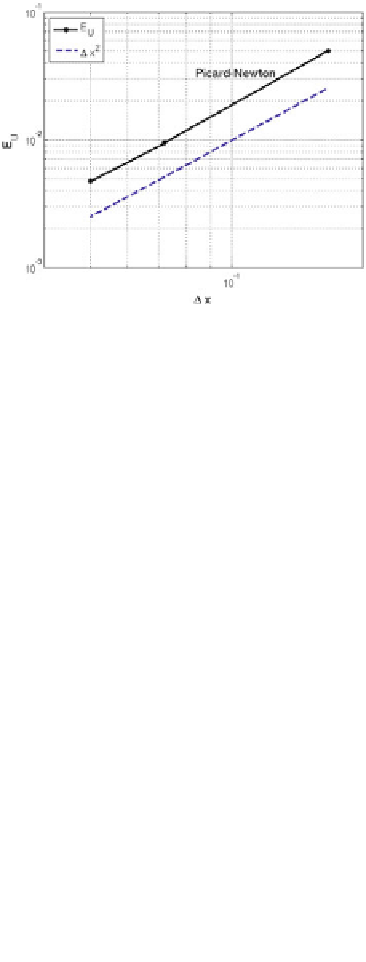Biomedical Engineering Reference
In-Depth Information
Fig. 12.3.
Test of consistency of the DA procedure for noise-free velocity data. The accuracy of
the computation, in terms of
L
2
norm of the velocity error (
E
U
), is the same as for the solution of
the FW problem
up to the fulfillment of a convergence criterion. When using the Newton method, the
convergence strongly depends on the initial guess, so a common procedure is to per-
form a few Picard iterations (12.6) and use the resulting velocity as an initial guess
for the Newton method. In our approach the loop for solving the nonlinear system
is merged with the one for the optimization problem, thus reducing the computa-
tional cost. Numerical experience (next subsection) shows that convergence is not
prevented by this further approximation. Other approaches can be however pursued,
for an introduction to optimization with nonlinear constraints see [6].
12.2.2 Numerical results
We first present some simulations on an analytic test case, to investigate basic con-
vergence properties of the DA procedure without and with the presence of the noise,
in comparison with the FE convergence of the forward problem. Then we address a
comparison between a classical Tikhonov regularization and the data interpolation
method. Results have been obtained with the C++ finite element library
LifeV
[10].
12.2.2.1 A consistency test
Let
Ω
be the domain
Ω
=[
−
0
.
5
,
1
.
5
]
×
[
0
,
2
]
with a flow described by the analytical
)=
2
1
2
e
2λ
x
e
λ
x
cos
e
λ
x
sin
solution
u
1
(
x
,
y
)=
1
−
(
2
π
y
)
,
u
2
(
x
,
y
(
2
π
y
)
,
p
(
x
,
y
)=
+
π
1
2
(
μ
−
1
μ
−
2
2
C
, with
035, and
C
is a constant chosen to give
a zero mean pressure. Solution of the DA problem has been obtained by using inf-
sup compatible FEs (
λ
=
−
+
16
π
)
,
μ
=
0
.
1
). Regularization is obtained with L corresponding
to the discrete gradient operator and
a
selected according to the DP. The nonlinear
term has been solved by combining Picard and Newton methods.
As expected, in the noise-free case the assimilated velocity recovers the solution
of the forward problem. In particular Fig. 12.3 shows the expected quadratic con-
1
bubble-
P
P




